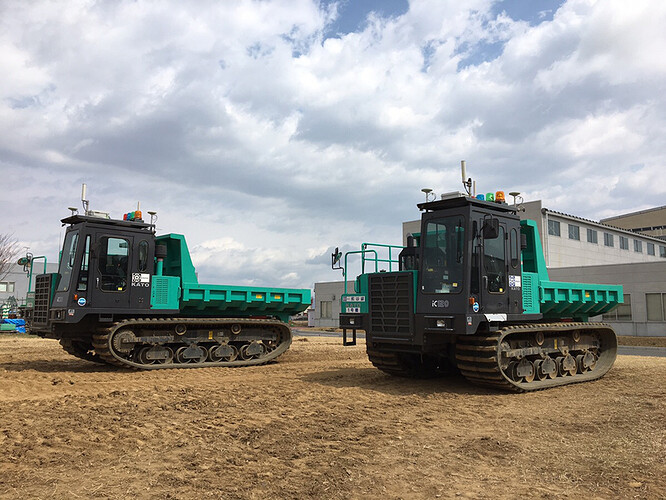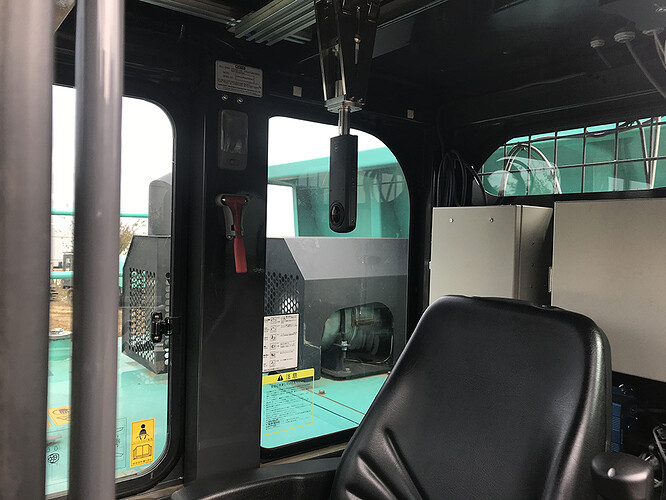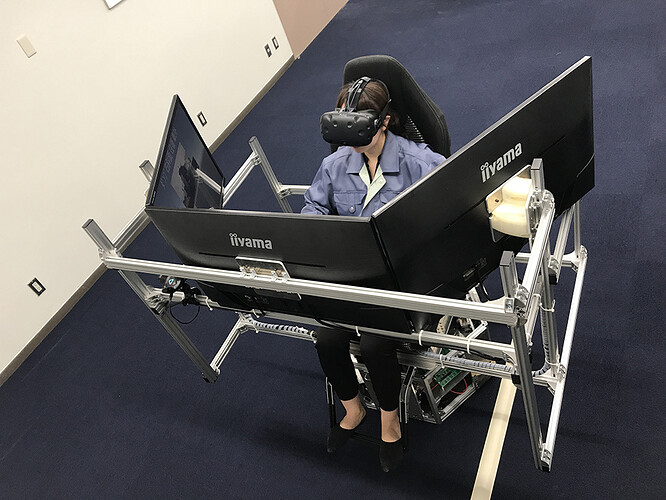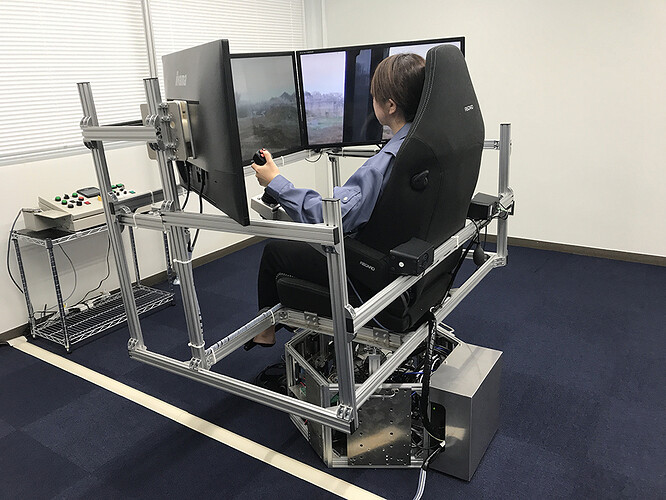Just saw a RICOH THETA Z1 featured in a Japanese article about unmanned construction technology developed by Kumagai Group and Tokyo National College of Technology. The system provides audio and live streaming video with the RICOH THETA Z1 to remote operators.
The group developed a VR Cockpit to control construction equipment remotely using a telepresence experience.
Real-time video from the RICOH THETA Z1 is streamed into a VR head-mounted display or cockpit. Audio and motion are also synchronized with the actual vehicle.
Take a look at the awesome 3 degree of freedom (3-DOF) base that the operator is sitting on to simulate the motion of the construction vehicle.
When the unmanned vehicles are deployed from natural disasters, they are effective in reducing the impact of secondary disasters. The systems improves the effectiveness of the vehicles by providing the feeling of vibration and a simulation of the inclination of the vehicle.
Construction equipment such as backhoes are tricky to balance as the center of gravity changes when the vehicle grabs soil and also when the vehicle turns while it is a carrying a load of soil. If the machine is used on a slope, it may tip over. As the vehicle most go over rough terrain, the side-to-side tilt of the vehicle changes constantly.
A normal camera cannot provide enough feedback to the remote vehicle operator using a birds-eye view. To safely operate the vehicle, a 360 view from the RICOH THETA is needed.
System using monitors for control is shown below.
The video is streamed from the RICOH THETA Z1 to the remote cockpit using Wi-Fi.
The operator can control the vehicle using joysticks.
The unmanned system will used in construction technology training for emergency disaster recovery operations.
RICOH THETA in Construction
Construction is one of the biggest markets for commercial use of the RICOH THETA. To see a list of RICOH THETA apps used in the construction industry, check out the construction category of the giant list of RICOH apps.
Update: November 19, 2019
Community member Michael Usami actually tried the system and reports that he did not experience motion sickness.
Michael Usami → Craig on Facebook comment
To your surprise, I think you won’t have motion sickness even with HMD.
I did tried this without motion sickness with HMD. Body motions suppress motion sickness on HMD. It is similar to a car driver who has less motion sickness than passengers. Usually this system is used putting on HMD.







